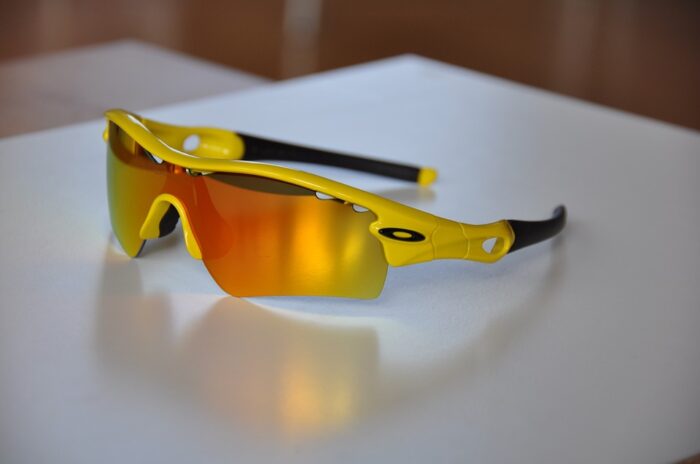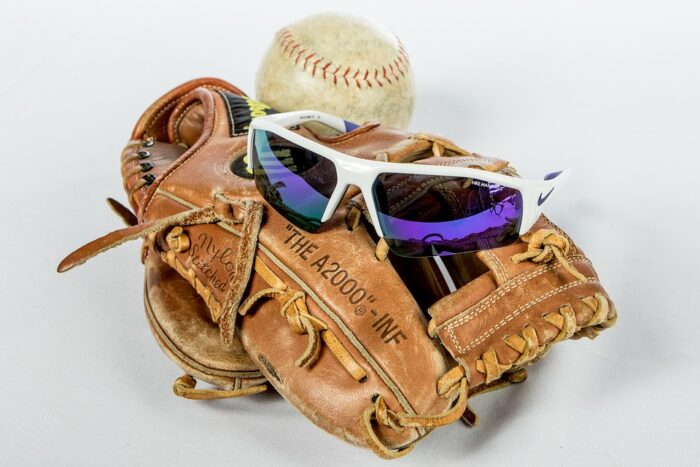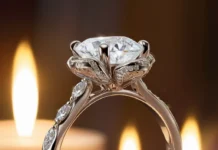
One of the items that athletes cannot miss having is sports sunglasses. Sports sunglasses act as safety glasses, by safeguarding your vision in the long run.
Given technological advancement and increased e-commerce, you can easily find your favorite prescription sports glasses online, however, give your choice a little consideration.
While searching for the best sport sunglasses, most of us forget about the requirements, their use in the long run and how well can the glasses preserve your vision.
We understand it is difficult to start listing the requirements for your sports sunglasses, which is why we have prepared an in-depth guide on how to choose your favorite pair of sports sunglasses. In this article, we draw your attention to the features to look for, the need for polarized lenses, frame recommendations, and other areas which are not discussed much.
Consider – The Below For The Best Sport Sunglasses
Having the perfect pair of prescription sports glasses does not only relate to the quality of lenses but the overall security. Sports sunglasses are a type of protective equipment which are bought for the long run. For instance, if your existing sunglasses are being sweaty every time you’re going for a hike, it is not for everyday use.
Sweat control, polarization, and color of lenses affect severely the overall eye health of a person. People often purchase sunglasses based on aesthetic reasons without understanding the effect of color during daylight and nighttime.
Truth be told, the lens colors offer different purposes and may impact negatively if not worn correctly. Let us take a look at each of these features one by one.

Color Of Lenses
Sports sunglasses are mostly worn to prevent environmental impact on the eye. The tint of the lenses is capable of enhancing depth perception, reduce eye fatigue, and provide better vision without letting daytime glare cause any form of disturbance.
While purchasing prescription sports sunglasses, you will find manufacturers offering prescription lenses to be placed behind the tinted lens. Each of these lenses is designed for specific lighting conditions. For example, blue lenses are used for high contrast and cool vision.
On the contrary, brown lenses distort the color spectrum to the least possible extent and therefore are best suited for driving. In retrospect, colorless lenses are used for preventing the eye from insects, wind, and spray. There are different shades of lenses available. From grey, yellow, orange, and brown. Make sure you learn the advantages of each shade and select a pair per your requirement. You can consult an optician or an eye expert.
Protection From Ultraviolet Radiation
Did you know that sports sunglasses can protect your eyes from UV rays?
That’s right!
When you are engaged in outdoor activities and exposed to the sun’s UV rays daily, it becomes difficult for your eyes to cope up with the harmful radiation and often leads to irritation, pain, improper vision, and redness in the eye. Standard UV protection lenses are available that can help you protect from the sun and keep your vision intact.
These lenses are called photochromic lenses that are capable of adapting to the surrounding light entering the eye. Photochromic lenses reduce sun glare coming out from shiny surfaces such as water or snow because of an antireflective coating. Additionally, polarized sunglasses have mirror coatings that further reduce the glare coming off from any surface capable of causing discomfort to the eye and are suitable for sports like snowshoeing, swimming, hiking, and skiing, therefore making it comfortable for the user to play in bright conditions.

Grip And Fit
The frames of prescription sports glasses have an important consideration to meet, offering the right support. A thoughtful and intentional design that prevents the glasses from slipping off is considered right. For a frame to act well, the three main components to loom for are – coverage, grip, and fit.
Each part of the frame plays a crucial role in providing ultimate performance and production. Sport sunglasses offering the perfect fit do not let you feel their presence so you can play without worrying about your glasses coming off.
For instance, if you are a cyclist, a pair of sunglasses with a straight temple design can sit well between the helmet and the sunglass. On the contrary, if you are an athlete competing in triathlons, a bent temple frame can be a better option. The flexibility in frame designs helps the proper circulation of airflow so your sunglasses do not fog up, or lead to sweaty instances.
Coverage
Why is frame coverage important?
Primarily because proper coverage keeps debris at bay. Choose the correct rim style and the height of the lens. For instance, semi-rimless frames only have the rim at the top to enable and an obstructed vision. There is no rim at the bottom of the frame. Therefore, the user experiences good ventilation. This further prevents the glasses from fogging up without compromising on the coverage. Similarly, shield frames are one of the tallest frames available in sports sunglasses.
They also offer maximum support and are a preferred choice among athletes who compete in triathlons. With the types of frames available in sports sunglasses, don’t worry about the style and how it will make you look. The frames are designed keeping in mind the style and ongoing trends so you can show it off whilst keeping your sense organs protected.

Final Words
Having perfectly designed sport sunglasses does not let you compromise on your vision.
For instance, great contrast also offers greater depth to both the shadow and bright areas. You do not compromise your vision while viewing items through a shadow and thus help you make quick decisions at ease.
Proper polarization, suitable color, grip, and fit are such areas that should not be compromised at any cost. Keep in mind that your eyes should last a lifetime, so protect them in a way to cherish them as long as you live. At CAGlasses, you will find a variety of prescription sports glasses. Visit now!
















